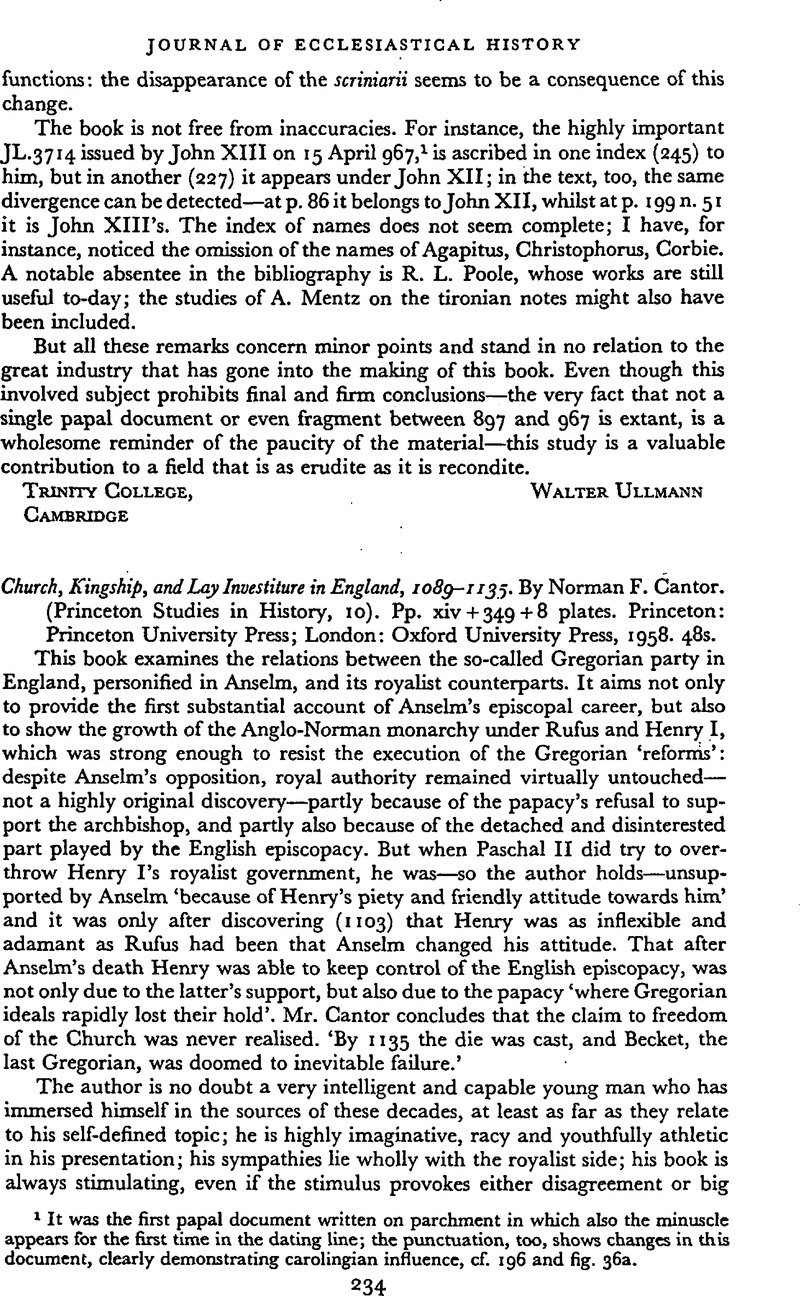No CrossRef data available.
Published online by Cambridge University Press: 25 March 2011

page 234 note 1 It was the first papal document written on parchment in which also the minuscle appears for the first time in the dating line; the punctuation, too, shows changes in this document, clearly demonstrating carolingian influence, cf. 196 and fig. 36a.
page 235 note 1 It is incidentally remarkable to read that the Dictatus Papae and the Dictatus of Avranches were based on Deusdedit and Burchard of Worms. The discoverer of the Avranches Dictatus had shown that it was of twelfth-century origin.
page 235 note 2 This matter becomes rather grotesque when we even read of Church-State relations in the county of Blois, because Ivo and the countess did not always agree.
page 236 note 1 Edgar ordo (ed. in L. Wickham Legg, Coronation Records, London 1901, 15): Quo ymnizato erigatur (rex) dc solio et ab episcopis et a plebe electus haec … promittat. Virtually the same in the ordo temp. William I (in J. Wickham Legg, Three Coronation Orders, London 1900, 53, cf. also 163, referring to the Benedictional of Robert).
page 236 note 2 For the East-Frankish ordo cf. Erdmann, C., Forschungen zur politiscken Ideenwelt des Frühmittelalters, Berlin 1951, 54 ff.Google Scholar; text ibid., 83 ff. sub no. 7. This ordo is significantly enough headed: Ordo ad regem benedicendum quando novus a clero et populo sublimatur in regnum. See this rubric (italicised words are identical with the ordo which Mr. Cantor holds introduces ‘reform’ ideas): Deinde iterum ipse episcopus affatur populum, si tali principi at rectori se subicere ipsiusque regnum firma fide stabilire atque iussionibus illius obtemperare velint iuxta apostulum: Omnis anima potestatibus sublimioribus subdita sit, regi quasi precellenti. Tunc ergo a circumstante clero et populo unanimiter dicatur: fiat, fiat. Amen. This text makes it abundantly clear that the ordo of Mr. Cantor has nothing to do with ‘reform’. In parenthesis it may be pointed out that the words iussionibus illius appear in the (Anselm) ordo as eius iussionibus which is the reading of only one of the MSS. transmitting the ordo, see Erdmann's note (d): MS. B. For the text of the Mainz ordo cf. Schramm, P. E., ‘Die Kronung in Deutschland’ in Savigny Z., Kan. Abt., XXIV (1935), at 312 sub no. 8, and at 327 sub no. 8.Google Scholar